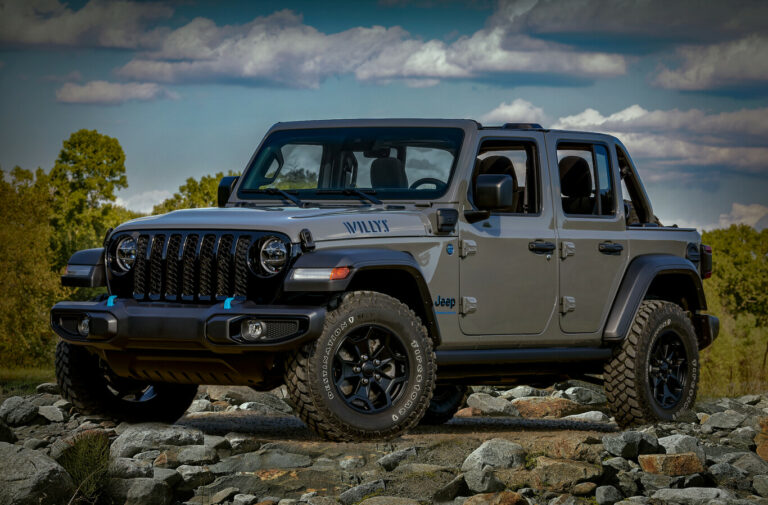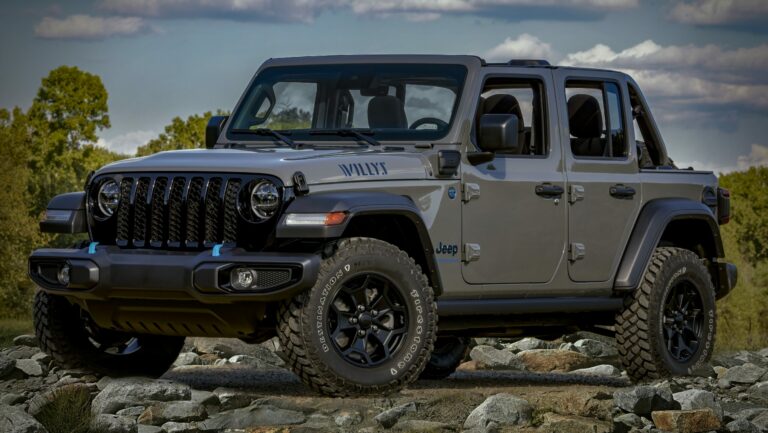Jeep Cherokee: An Enduring Icon of Capability and Comfort
Jeep Cherokee: An Enduring Icon of Capability and Comfort jeeps.truckstrend.com
From its rugged origins conquering trails to its modern iteration blending urban sophistication with adventurous spirit, the Jeep Cherokee nameplate has long represented a unique blend of capability, versatility, and American heritage. More than just a compact SUV, the Cherokee has evolved through various forms, adapting to changing consumer demands while consistently upholding the core values of the Jeep brand: freedom, adventure, authenticity, and passion. This comprehensive guide delves into the essence of the Jeep Cherokee, exploring its storied past, dissecting its modern features, offering practical advice for owners, and shedding light on its place in today’s automotive landscape.
A Storied Past: The Evolution of the Jeep Cherokee
Jeep Cherokee: An Enduring Icon of Capability and Comfort
The Jeep Cherokee’s journey began in 1974 with the SJ generation, a full-size SUV that quickly gained a reputation for its robustness and off-road prowess. However, it was the introduction of the XJ generation in 1984 that truly cemented the Cherokee’s legendary status. Revolutionary for its time, the XJ was one of the first SUVs to adopt a unibody construction, making it lighter, more fuel-efficient, and more car-like to drive without sacrificing its formidable off-road capabilities. This iconic design, characterized by its boxy silhouette and utilitarian charm, became synonymous with adventure and remains highly sought after by enthusiasts today.
Following the XJ’s remarkable run, the Cherokee name went dormant in North America for a period, with other models like the Liberty filling its segment. The nameplate made its triumphant return in 2014 with the KL generation, marking a significant departure in design and philosophy. While still retaining the core Jeep DNA of off-road capability (especially in its Trailhawk trim), the KL Cherokee embraced a more modern, aerodynamic design, a refined interior, and a greater emphasis on on-road comfort and advanced technology to appeal to a broader audience of compact SUV buyers. This shift allowed the Cherokee to compete effectively in a crowded segment, offering a compelling package for families, commuters, and adventurers alike.
The Modern Jeep Cherokee: Design, Features, and Trims (KL Generation)
The KL generation of the Jeep Cherokee, produced from 2014 through 2023, represents a significant evolution in the model’s design and technological offerings. Its distinctive front fascia, characterized by a seven-slot grille and slim LED daytime running lights, sets it apart from its contemporaries.
Engine and Drivetrain Options:
The modern Cherokee offered a diverse range of powertrains to suit various needs:
- 2.4L Tigershark MultiAir 2 I-4 Engine: A fuel-efficient option for daily driving, producing around 180 horsepower.
- 3.2L Pentastar V6 Engine: Offering a balance of power and efficiency (around 271 horsepower), ideal for towing and more spirited driving.
- 2.0L Turbocharged I-4 Engine: Introduced later in its production, this engine provided a robust 270 horsepower and impressive torque, offering V6-like performance with better fuel economy.

All engines were paired with a smooth-shifting 9-speed automatic transmission. Drivetrain options included front-wheel drive (FWD) for optimal fuel efficiency and several innovative 4×4 systems:
- Jeep Active Drive I: A fully automatic 4×4 system for seamless transition between 2WD and 4WD.
- Jeep Active Drive II: Adds a low-range mode for enhanced off-road capability and improved traction in challenging conditions.
- Jeep Active Drive Lock: Exclusive to the Trailhawk, this system includes a mechanical rear locker for maximum off-road articulation and traction.
Interior Comfort and Technology:
The Cherokee’s interior evolved to offer a more premium and technologically advanced experience. Higher trims boasted leather upholstery, heated and ventilated seats, and panoramic sunroofs. The centerpiece of the cabin was the Uconnect infotainment system, available with screen sizes up to 8.4 inches, featuring Apple CarPlay, Android Auto, navigation, and intuitive controls. Safety was also a priority, with available features like Adaptive Cruise Control, LaneSense Lane Departure Warning, Blind-Spot Monitoring, and Forward Collision Warning with Active Braking.
Key Trims and Their Distinctive Features:
The Cherokee was available in several trims, each catering to different preferences:
- Latitude/Latitude Plus: The entry-level and mid-range trims, offering essential features, comfortable seating, and a good balance of value.
- Limited: Stepped up the luxury with leather seats, a larger Uconnect screen, and more standard safety features.
- Trailhawk: The undisputed king of off-road capability within the Cherokee lineup. It featured increased ground clearance, off-road suspension, skid plates, red tow hooks, and the advanced Active Drive Lock 4×4 system with Selec-Terrain Traction Management (Rock mode).
- Overland: The pinnacle of luxury, offering premium interior materials, unique exterior styling, and a host of advanced comfort and technology features.
- Altitude: Often an appearance package based on other trims, adding blacked-out accents for a sportier look.
Balancing Act: On-Road Comfort and Off-Road Capability
One of the Cherokee’s most compelling attributes was its ability to strike a balance between daily driving comfort and genuine off-road capability.
On-Road Dynamics:
Thanks to its unibody construction and independent suspension, the modern Cherokee provided a remarkably smooth and composed ride for a vehicle with such off-road potential. Its handling was predictable, making it easy to maneuver in urban environments and comfortable for long highway journeys. The optional V6 and turbocharged engines offered ample power for merging and passing, while the 9-speed transmission generally delivered seamless shifts.
Off-Road Prowess:
While the Latitude and Limited trims were capable on light trails and in adverse weather, the Trailhawk truly embodied the Jeep spirit. Its higher ground clearance, aggressive approach and departure angles, and specialized features like the Selec-Terrain Traction Management System (with modes like Snow, Sport, Sand/Mud, and Rock) allowed it to tackle significantly challenging terrain. The Trail-Rated badge on the Trailhawk was a testament to its ability to perform in five key off-road categories: traction, ground clearance, maneuverability, articulation, and water fording.
Towing Capacity:
Equipped with the 3.2L V6 engine and the available Trailer Tow Group, the Jeep Cherokee boasted a best-in-class towing capacity of up to 4,500 pounds. This made it a capable choice for hauling small boats, campers, or utility trailers, adding to its versatility for adventure-seekers.
Fuel Economy:
Fuel efficiency varied significantly depending on the engine and drivetrain. The 2.4L engine generally offered the best figures, followed by the 2.0L turbo, and then the 3.2L V6. While not class-leading, the Cherokee’s fuel economy was competitive for a vehicle with its level of capability, especially the 4×4 models.
Navigating Ownership: Buying, Maintaining, and Maximizing Your Cherokee
As the Jeep Cherokee (KL generation) concluded its production run with the 2023 model year, the focus for prospective buyers now shifts predominantly to the robust used vehicle market.
Buying a Used Jeep Cherokee:
- Research Specific Years: Early KL models (2014-2015) sometimes faced initial software issues with the 9-speed transmission, which were largely resolved with updates. Later models generally benefited from these refinements.
- Check for Recalls: Ensure any applicable recalls have been addressed, especially for earlier model years.
- Inspect for Off-Road Use: If considering a Trailhawk, look for signs of heavy off-road use (underbody damage, worn suspension components) as these might indicate a harder life.
- Vehicle History Report: Always obtain a comprehensive report (CarFax, AutoCheck) to check for accidents, service history, and title issues.
Maintenance and Common Considerations:
- Routine Service: Adhere to the manufacturer’s recommended maintenance schedule for oil changes, tire rotations, and fluid checks.
- Transmission Fluid: Pay attention to transmission fluid changes, especially for models with higher mileage, as it’s crucial for the longevity of the 9-speed automatic.
- Electrical Issues: Some owners have reported minor electrical gremlins or Uconnect system quirks; ensure all electronics are functioning correctly during a test drive.
- Suspension Components: Over time, struts, shocks, and bushings may need replacement, especially if the vehicle has seen rough roads or off-road adventures.
Aftermarket and Customization:
The Jeep Cherokee, particularly the Trailhawk, enjoys a vibrant aftermarket community. Owners can find:
- Lift Kits: To increase ground clearance and accommodate larger tires.
- Off-Road Tires: For improved traction in mud, snow, or rocks.
- Recovery Gear: Winches, recovery points, and high-lift jacks for serious off-roading.
- Roof Racks and Cargo Solutions: To expand hauling capacity for gear.
Resale Value:
Jeep vehicles, including the Cherokee, generally hold their value well, especially the more capable 4×4 and Trailhawk trims. Their enduring appeal and reputation for ruggedness contribute to a strong demand in the used market.
Practical Advice for Cherokee Enthusiasts
- Understand Your 4×4 System: If your Cherokee has Active Drive I, II, or Lock, familiarize yourself with its capabilities. Use Selec-Terrain appropriately for different conditions.
- Tire Choice Matters: For optimal performance, especially in challenging weather or off-road, invest in quality all-terrain or winter tires suitable for your driving needs.
- Master Uconnect: Spend time learning the features of your Uconnect system – from voice commands to customizing your home screen, it can significantly enhance your driving experience.
- Winter Driving: In snow or ice, engage your 4×4 system early (if not automatic), reduce speed, and allow for increased braking distances. The "Snow" mode on Selec-Terrain can be very helpful.
- Basic Off-Roading (Trailhawk owners): Start with easy trails to understand your vehicle’s limits. Air down tires for better traction on soft surfaces. Always go with a buddy and carry recovery gear.
Current Market Value: A Price Guide for the Jeep Cherokee
The Jeep Cherokee (KL generation) concluded its production in early 2023, making the 2023 model year the last one available as new. Consequently, the market for the Cherokee is now primarily in used vehicles. Prices for used Cherokees vary significantly based on model year, trim level, mileage, condition, engine, 4×4 system, and regional demand.
Here’s an estimated price guide, providing context for what you might expect to pay for a used model, along with the approximate last known MSRP for the new 2023 models:
Last Known MSRP for New 2023 Jeep Cherokee Models (Approximate Ranges):
| Trim Level | Approximate 2023 MSRP Range (New) | Key Features (2023) |
|---|---|---|
| Latitude Lux | $35,000 – $37,000 | Leather-trimmed seats, heated front seats, heated steering wheel, Uconnect 4 with 8.4-inch display, 2.4L engine, FWD/4×4 option. |
| Altitude Lux | $37,000 – $39,000 | Latitude Lux features plus gloss black exterior accents, 17-inch gloss black wheels, 2.4L engine, FWD/4×4 option. |
| Trailhawk | $40,000 – $43,000 | Off-road suspension, Active Drive Lock 4×4, skid plates, red tow hooks, 3.2L V6 engine standard, Selec-Terrain with Rock Mode. |
| Limited | $40,000 – $42,000 | Premium leather, power liftgate, panoramic sunroof option, advanced safety features, 2.0L Turbo engine option, FWD/4×4 option. |
Estimated Used Market Values (As of Late 2023 / Early 2024 for KL Generation, 2014-2023):
| Model Year Range | Trim Level (Example) | Estimated Used Price Range (Excellent Condition) | Notes |
|---|---|---|---|
| 2014-2016 | Latitude/Limited | $10,000 – $16,000 | Earlier models, higher mileage, potential for initial transmission software issues. |
| Trailhawk | $14,000 – $20,000 | Holds value better due to off-road capability. | |
| 2017-2019 | Latitude/Limited | $15,000 – $22,000 | Mid-cycle models, generally more refined. |
| Trailhawk | $18,000 – $26,000 | Continued strong demand for off-road trim. | |
| 2020-2023 | Latitude Lux/Altitude Lux | $20,000 – $30,000 | Newer models, lower mileage, latest tech. |
| Trailhawk/Limited | $25,000 – $35,000+ | Premium trims, very recent models, closest to new vehicle feel. |
Note: These are estimates and actual prices will vary. Always check local listings and vehicle condition.
Frequently Asked Questions (FAQ) about the Jeep Cherokee
Q1: Is the Jeep Cherokee good off-road?
A1: Yes, especially the Trailhawk trim. While all 4×4 Cherokees are capable on light trails and in adverse weather, the Trailhawk is specifically engineered for serious off-roading with features like increased ground clearance, off-road suspension, skid plates, and the Active Drive Lock 4×4 system with a rear locker.
Q2: What is the difference between the Jeep Cherokee and the Jeep Grand Cherokee?
A2: The primary difference is size and segment. The Cherokee is a compact SUV, while the Grand Cherokee is a mid-size SUV. The Grand Cherokee typically offers more interior space, a more luxurious feel, and often more powerful engine options and higher towing capacities, positioned at a higher price point.
Q3: Is the Jeep Cherokee reliable?
A3: Generally, the later KL generation models (2017 onwards) have shown good reliability. Early 2014-2015 models had some initial software issues with the 9-speed transmission, which were largely resolved via updates. As with any vehicle, consistent maintenance is key to longevity and reliability.
Q4: What is Selec-Terrain Traction Management System?
A4: Selec-Terrain is Jeep’s system that allows the driver to optimize the vehicle’s performance for different terrains by adjusting throttle response, transmission shift points, traction control, and the 4×4 system. Common modes include Auto, Snow, Sport, Sand/Mud, and Rock (exclusive to Trailhawk).
Q5: What is the towing capacity of the Jeep Cherokee?
A5: When equipped with the 3.2L Pentastar V6 engine and the Trailer Tow Group, the Jeep Cherokee has a maximum towing capacity of 4,500 pounds, which is competitive for its class.
Q6: Is the Jeep Cherokee still being made?
A6: No, the Jeep Cherokee (KL generation) concluded its production with the 2023 model year. Jeep has not announced a direct replacement for the Cherokee in the compact SUV segment at this time, though its legacy continues through other models in the Jeep lineup.
Conclusion
The Jeep Cherokee, in its various iterations, has left an indelible mark on the automotive landscape. From the groundbreaking XJ to the refined and capable KL, it has consistently offered a compelling blend of rugged utility and everyday comfort. While the new chapter for the Cherokee nameplate is currently on pause, its strong presence in the used market ensures that its legacy of adventure, capability, and distinctive style will continue to thrive. Whether you seek a reliable daily driver with robust all-weather capability or a true off-road companion, the Jeep Cherokee remains a formidable and appealing choice, embodying the spirit of freedom that is synonymous with the Jeep brand.




